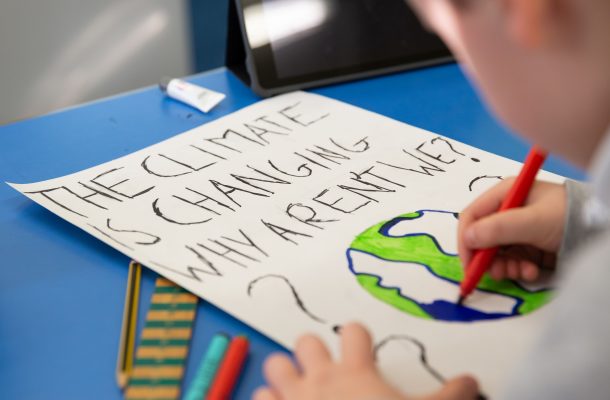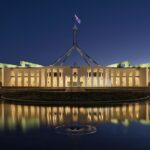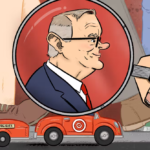A better future for our children

A landmark Commission report convened by WHO, UNICEF and The Lancet has found the health and future of every child and adolescent worldwide is under immediate threat from ecological degradation, climate change and exploitative marketing practices that push fast food, sugary drinks, alcohol and tobacco at children.
No single country is adequately protecting children’s health, their environment and their futures, according to an accompanying global index of 180 countries, comparing performance on child flourishing, including measures of child survival and well-being, such as health, education, and nutrition; sustainability, including a proxy for greenhouse gas emissions, and equity, or income gaps
Australia ranked 20th in the Index for survive and thrive metrics – performing best on survive rather than thrive measures (0·95 vs 0·85). However, it performed poorly on creating an environment fit for the future of its children – with CO2 emissions projected to be 524% above its 2030 target, and fell within the bottom 10 countries for emissions. The top and bottom 10 countries listed here.
The report, A Future for the World’s Children?, finds that the health and future of every child and adolescent worldwide is under immediate threat from ecological degradation, climate change and exploitative marketing practices that push heavily processed fast food, sugary drinks, alcohol and tobacco at children.
“Despite improvements in child and adolescent health over the past 20 years, progress has stalled, and is set to reverse,” said former Prime Minister of New Zealand and Co-Chair of the Commission, Helen Clark.
“It has been estimated that around 250 million children under five years old in low- and middle-income countries are at risk of not reaching their developmental potential, based on proxy measures of stunting and poverty. But of even greater concern, every child worldwide now faces existential threats from climate change and commercial pressures.
“Countries need to overhaul their approach to child and adolescent health, to ensure that we not only look after our children today but protect the world they will inherit in the future,” she added.
Climate change threatens every child’s future
The report includes a new global index of 180 countries, comparing performance on child flourishing, including measures of child survival and well-being, such as health, education, and nutrition; sustainability, with a proxy for greenhouse gas emissions, and equity, or income gaps. [Top & Bottom 10 countries; Interactive Index, Full Global Index on pp. 35-38] [1]
According to the report, while the poorest countries need to do more to support their children’s ability to live healthy lives, excessive carbon emissions –disproportionately from wealthier countries – threaten the future of all children.
If global warming exceeds 4°C by the year 2100 in line with current projections, this would lead to devastating health consequences for children, due to rising ocean levels, heatwaves, proliferation of diseases like malaria and dengue, and malnutrition.
The index shows that children in Norway, the Republic of Korea, and the Netherlands have the best chance at survival and well-being, while children in Central African Republic, Chad, Somalia, Niger and Mali face the worst odds.
However, when authors took per capita CO2 emissions into account, the top countries trail behind: Norway ranked 156, the Republic of Korea 166, and the Netherlands 160. Each of the three emits 210% more CO2 per capita than their 2030 target. The United States of America (USA), Australia, and Saudi Arabia are among the ten worst emitters.
“More than 2 billion people live in countries where development is hampered by humanitarian crises, conflicts, and natural disasters, problems increasingly linked with climate change,” said Minister Awa Coll-Seck from Senegal, Co-Chair of the Commission.
“While some of the poorest countries have among the lowest CO2 emissions, many are exposed to the harshest impacts of a rapidly changing climate. Promoting better conditions today for children to survive and thrive nationally does not have to come at the cost of eroding children’s futures globally.”
The only countries on track to beat CO2 emission per capita targets by 2030, while also performing fairly (within the top 70) on child flourishing measures are: Albania, Armenia, Grenada, Jordan, Moldova, Sri Lanka, Tunisia, Uruguay and Vietnam.
Calling out predatory marketing
The report also highlights the distinct threat posed to children from harmful marketing. Evidence suggests that children in some countries see as many as 30,000 advertisements on television alone in a single year, while youth exposure to vaping (e-cigarettes) advertisements increased by more than 250% in the USA over two years, reaching more than 24 million young people.
Professor Anthony Costello, one of the Commission’s authors, said: “Industry self-regulation has failed. Studies in Australia, Canada, Mexico, New Zealand and the USA – among many others – have shown that self-regulation has not hampered commercial ability to advertise to children.
For example, despite industry signing up to self-regulation in Australia, children and adolescent viewers were still exposed to 51 million alcohol ads during just one year of televised football, cricket and rugby. And the reality could be much worse still: we have few facts and figures about the huge expansion of social media advertising and algorithms aimed at our children.”
Children’s exposure to commercial marketing of junk food and sugary beverages is associated with purchase of unhealthy foods and overweight and obesity, linking predatory marketing to the alarming rise in childhood obesity. The number of obese children and adolescents increased from 11 million in 1975 to 124 million in 2016 – an 11-fold increase, with dire individual and societal costs.
A manifesto for immediate action
To protect children, the independent Commission authors call for a new global movement driven by and for children. Specific recommendations include:
1. Stop CO2 emissions with the utmost urgency, to ensure children have a future on this planet;
2. Place children and adolescents at the centre of our efforts to achieve sustainable development;
3. New policies and investment in all sectors to work towards child health and rights;
4. Incorporate children’s voices into policy decisions;
5. Tighten national regulation of harmful commercial marketing, supported by a new Optional Protocol to the UN Convention on the Rights of the Child.
Dr. Richard Horton, Editor-in-Chief of The Lancet family of journals, said: “The opportunity is great. The evidence is available. The tools are at hand. From heads-of-state to local government, from UN leaders to children themselves, this Commission calls for the birth of a new era for child and adolescent health. It will take courage and commitment to deliver. It is the supreme test of our generation.”
“From the climate crisis to obesity and harmful commercial marketing, children around the world are having to contend with threats that were unimaginable just a few generations ago,” said Henrietta Fore, UNICEF Executive Director. “It is time for a rethink on child health, one which places children at the top of every government’s development agenda and puts their well-being above all considerations.”
“This report shows that the world’s decision makers are failing today’s children and youth: failing to protect their health, failing to protect their rights, and failing to protect their planet,” Dr Tedros Adhanom Ghebreyesus, Director-General of the World Health Organization said.
“This must be a wakeup call for countries to invest in child health and development, ensure their voices are heard, protect their rights, and build a future that is fit for children.”
Local author, Professor Peter Sly, Director of the Children’s Health and Environment Program at the University of Queensland, said:
“The Prime Minster, Scott Morrison, dubbed the summer of 2019-2020 and “Black Summer” related to prolonged drought and an unprecedented early bushfire season, yet prominent members of his Government deny any human “responsibility” for our changing climate.
“Our politician need to abandon their ideological position adopted along “party lines” and face reality. The continued mining, exporting and burning of fossil fuels represents an abrogation of our Global responsibility.
“Climate change and especially the effects of ocean warming and sea level rise present real and current threats to our Pacific Island Nations neighbours. Our politicians accept this as a “theoretical possibility” but refuse to act.”
“According to a recent poll, 67% of the Australian population want increased action on emissions and climate change. Our youth actively engage with the Global “school climate strike” movement, yet are discouraged by our leadership.
“Recommendation 7 of the commission report recommends that children should be given high-level platforms to share their concerns and ideas and to claim their rights to a healthy future and planet. Australia could do with encouraging this “child-led” activism. Maybe our politicians will listen!”.
“The various Governments and regulators responsible need to impose restrictions that truly protect children. Self-regulation is not working and did not work with the tobacco industry.
“A complete ban on advertising for all forms of alcohol and all forms of gaming during any program, including all sporting events likely to be watched by children, broadcast before 8:30 pm will be required to protect children. We did it for tobacco, so why not alcohol and gambling?”
“The other aspect of harmful marketing that is ignored by the Australian Governments and regulator are chemicals, especially those with suspected or proved neurotoxic potential.
“Australia lags well behind Europe and even the USA in regulating of banning of harmful chemicals in products intended for use by children or that children are likely to come into contact with. The best examples of this are bisphenols and phthalate-containing products.”
Open Forum is a policy discussion website produced by Global Access Partners – Australia’s Institute for Active Policy. We welcome contributions and invite you to submit a blog to the editor and follow us on Twitter, Facebook, Linkedin and Mastadon.













